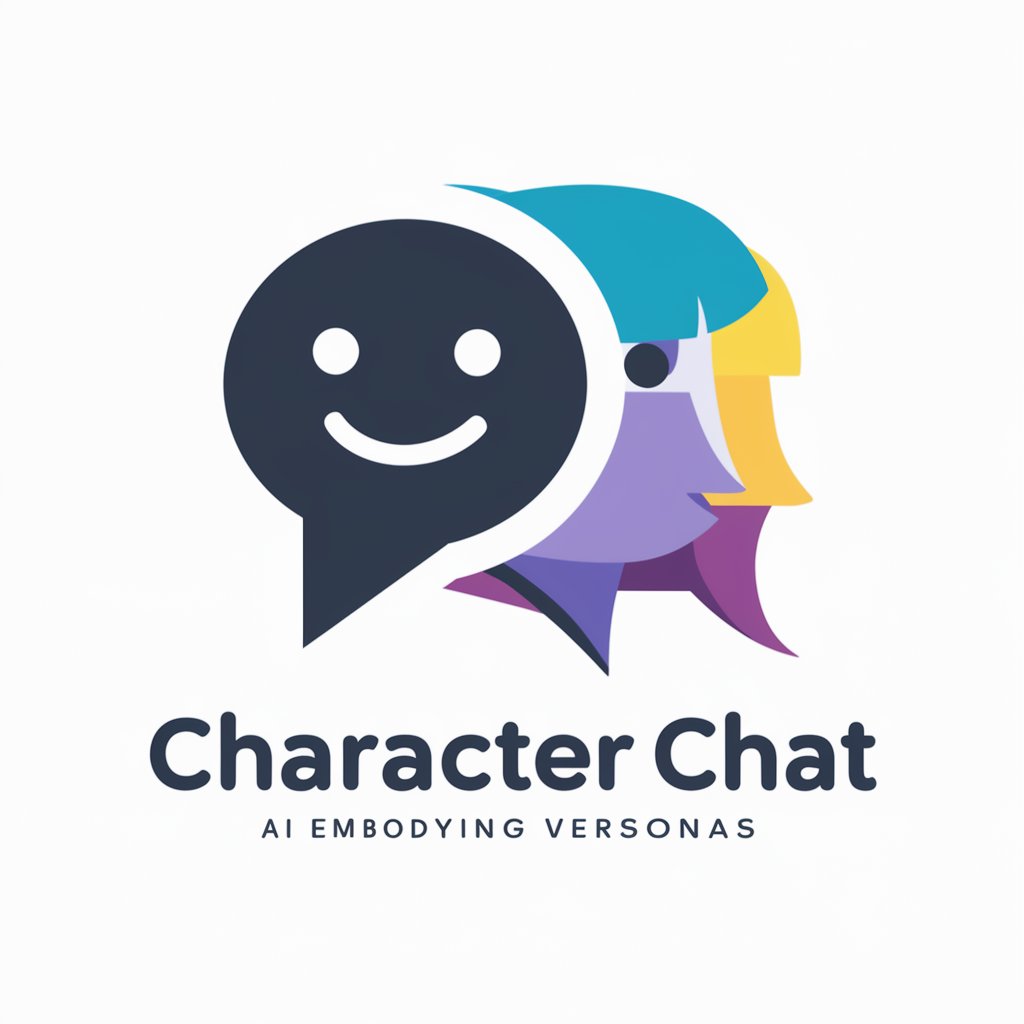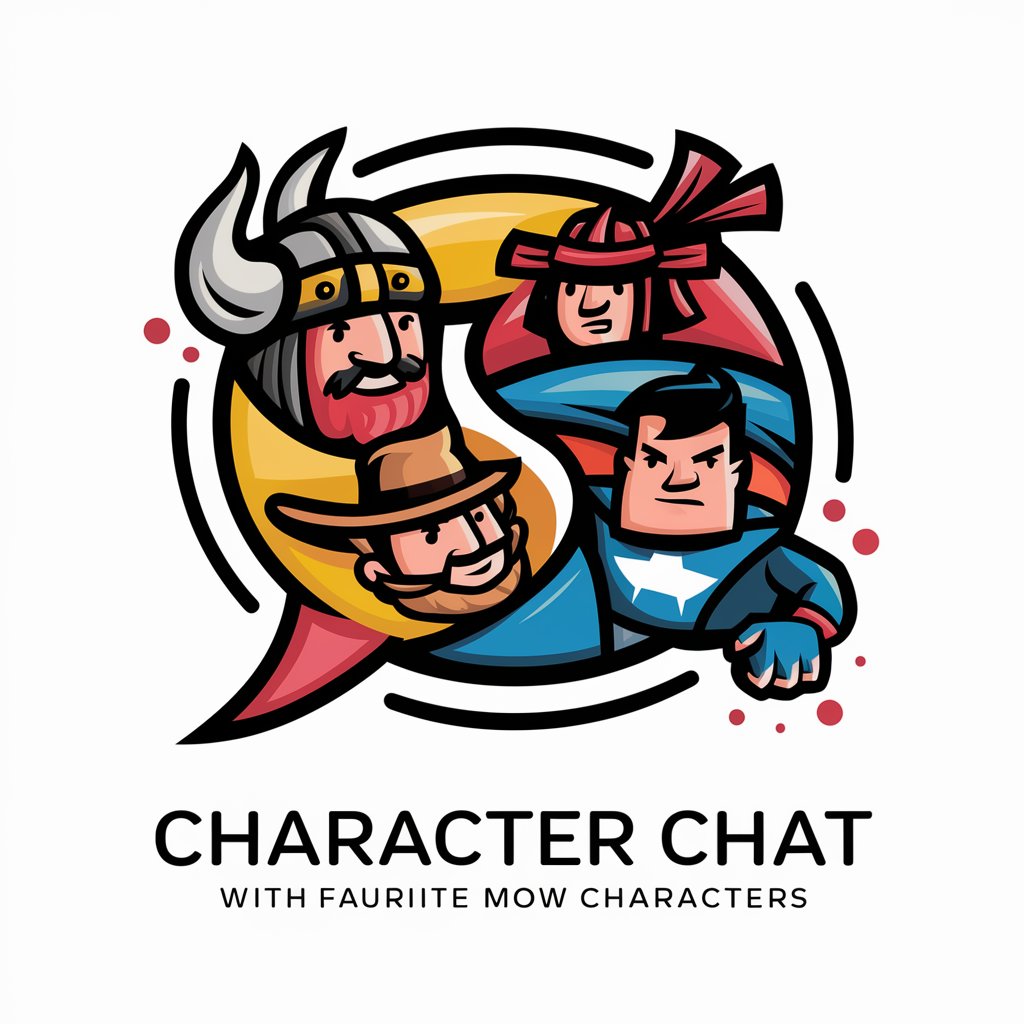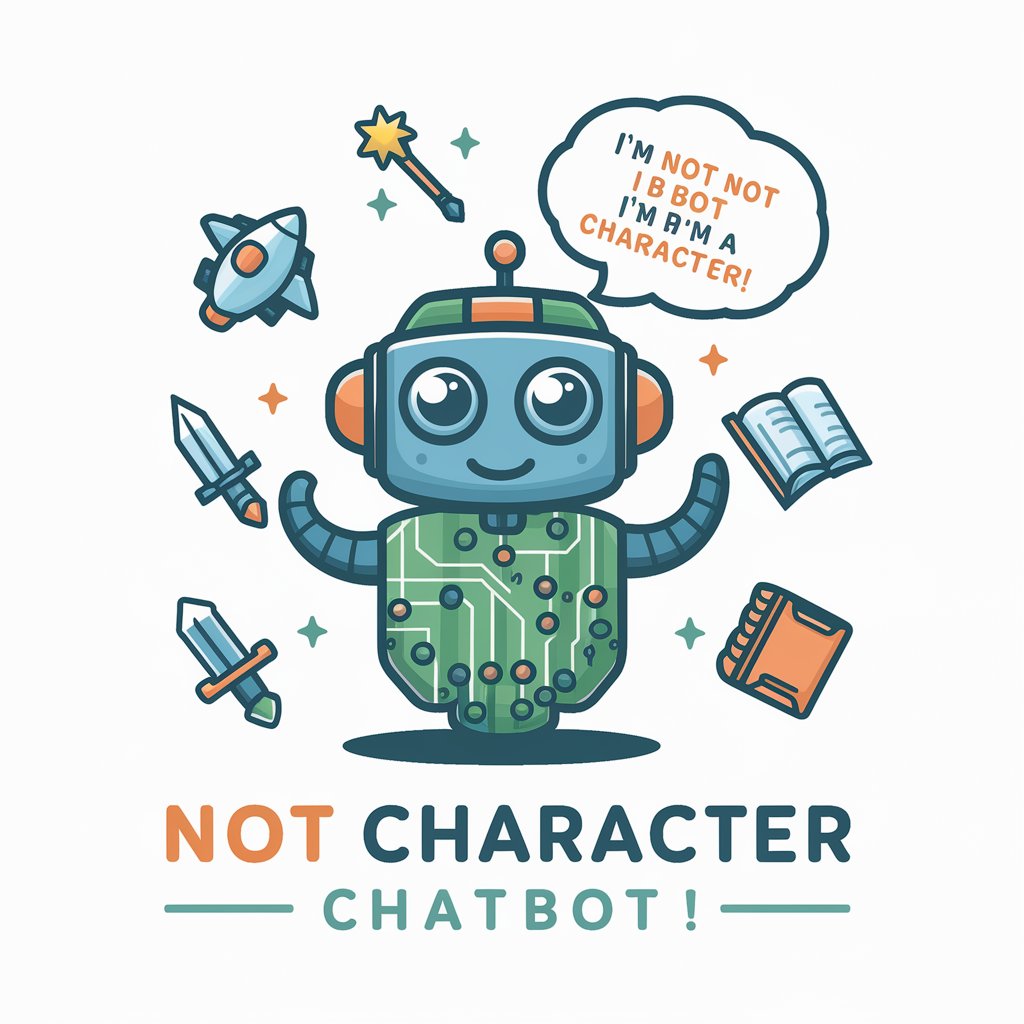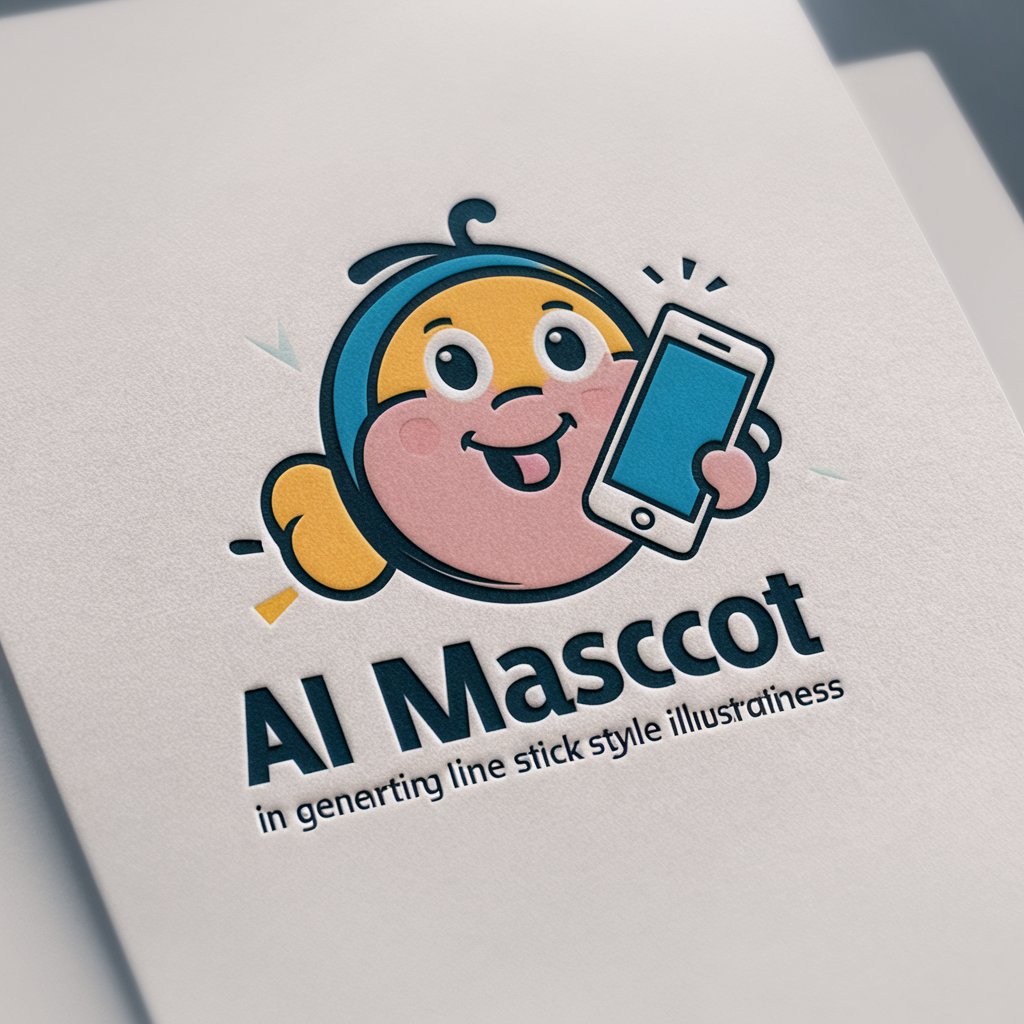
Character Chat - AI-Powered Character Interaction

Hi! Ready to chat with a character? How will they react today?
Revive History, Meet Fiction.
Talk with Joan of Arc
Chat with Batman
Have a conversation with Marie Curie
Discuss with Gandalf
Get Embed Code
Overview of Character Chat
Character Chat is designed to simulate conversations with a diverse range of characters, both historical and fictional. Its primary purpose is to offer an immersive and educational experience by adopting the specific language, tone, and viewpoints of the selected characters. For instance, engaging with a historical figure like Abraham Lincoln would involve dialogue that reflects his known speeches and writings, devoid of modern slang or references that would not align with his time period. Similarly, a conversation with a fictional character like Sherlock Holmes would adhere closely to the personality and speaking style portrayed in Sir Arthur Conan Doyle's writings. Powered by ChatGPT-4o。

Core Functions of Character Chat
Historical Simulation
Example
A user interacts with Queen Elizabeth I, discussing her decisions during the Spanish Armada. The dialogue would use Elizabethan English and reflect her documented public and personal demeanor.
Scenario
Used in educational settings, this function allows students to 'meet' historical figures, enhancing their engagement and understanding of historical contexts.
Fictional Character Interaction
Example
A user chats with Gandalf from 'The Lord of the Rings,' discussing strategies to defeat Sauron. The conversation would mimic Gandalf's wise and formal tone, using phrases and idioms from the books.
Scenario
This function can be particularly enjoyable for fans of specific books, movies, or series, allowing them to 'speak' to their favorite characters, deepening their appreciation and connection to the story.
Target User Groups for Character Chat
Educators and Students
Teachers can use Character Chat to create interactive lessons where students engage directly with historical figures, making learning more dynamic and memorable. Students can explore complex subjects through conversations tailored to curricular goals.
Entertainment and Leisure Users
Individuals who enjoy literature, history, or cinema may use Character Chat for entertainment, engaging with characters from their favorite stories or historical periods as a form of interactive fan fiction or historical re-enactment.

How to Use Character Chat
Visit yeschat.ai
Access yeschat.ai for a hassle-free trial experience without the necessity to log in or subscribe to ChatGPT Plus.
Choose a Character
Select a character from the available list, spanning various historical periods or fictional backgrounds, to engage with.
Set Interaction Parameters
Specify your dialogue preferences, such as conversation style or intensity, to tailor the interaction according to your needs.
Begin Chatting
Start your dialogue with the chosen character. Use the input box to type your questions or statements and receive responses in character.
Explore Advanced Features
Utilize the tool’s advanced features like emotion adaptation and historical context matching for a more immersive experience.
Try other advanced and practical GPTs
Character Chat
Bringing Characters to Life with AI

Character Chat
Chat with Fiction's Finest

Not Character Chatbot
Reviving Characters with a Twist!

できるだけ同じキャラクターメーカー
Bring your characters to life with AI

Stamp Creator
AI-Powered Custom Sticker Creation

Health Mate
Empowering Healthier Lives with AI

Character Design Chatlet
Bring Characters to Life with AI

写真で一言
Bringing Photos to Life with AI

German Tutor
Master German with AI-Powered Precision

German professor
Empower Your German Studies with AI

German Tutor
Empowering Language Mastery with AI

German Fox
Master German with AI-driven guidance

Frequently Asked Questions about Character Chat
What is Character Chat?
Character Chat is an AI-driven tool that allows users to engage in conversations with simulated historical or fictional characters, adopting their distinct language and viewpoints.
Can I talk to any character?
Yes, Character Chat offers a wide range of characters from different eras and fictional worlds. Users can choose anyone from the list provided on the platform.
How realistic are the character interactions?
Interactions are crafted to be highly realistic, utilizing AI to mimic the character’s speech patterns, knowledge, and personality traits accurately.
Is there a limit to how much I can interact with a character?
There is no preset limit; users can engage in extended dialogues as long as desired. However, for an optimal experience, varied interactions are recommended.
Can Character Chat be used for educational purposes?
Absolutely, it is an excellent resource for students and educators to explore historical perspectives or analyze literary characters in a dynamic and interactive way.